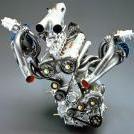Porsche 918 RSR Concept (Foto Ufficiali)
-
Contenuti simili
-
Porsche 357 Vision Speedster Concept 2023
Pubblicato da j,
- porsche 357 vision speedster concept
- porsche 357
- (e 3 altri in più)
- 6 risposte
- 570 visite
-
- 30 risposte
- 4890 visite
-
- 12 risposte
- 1890 visite
-
-
-





.thumb.jpg.46228d717c405acd43b45b79fddce6a4.jpg)



















Messaggi Raccomandati: